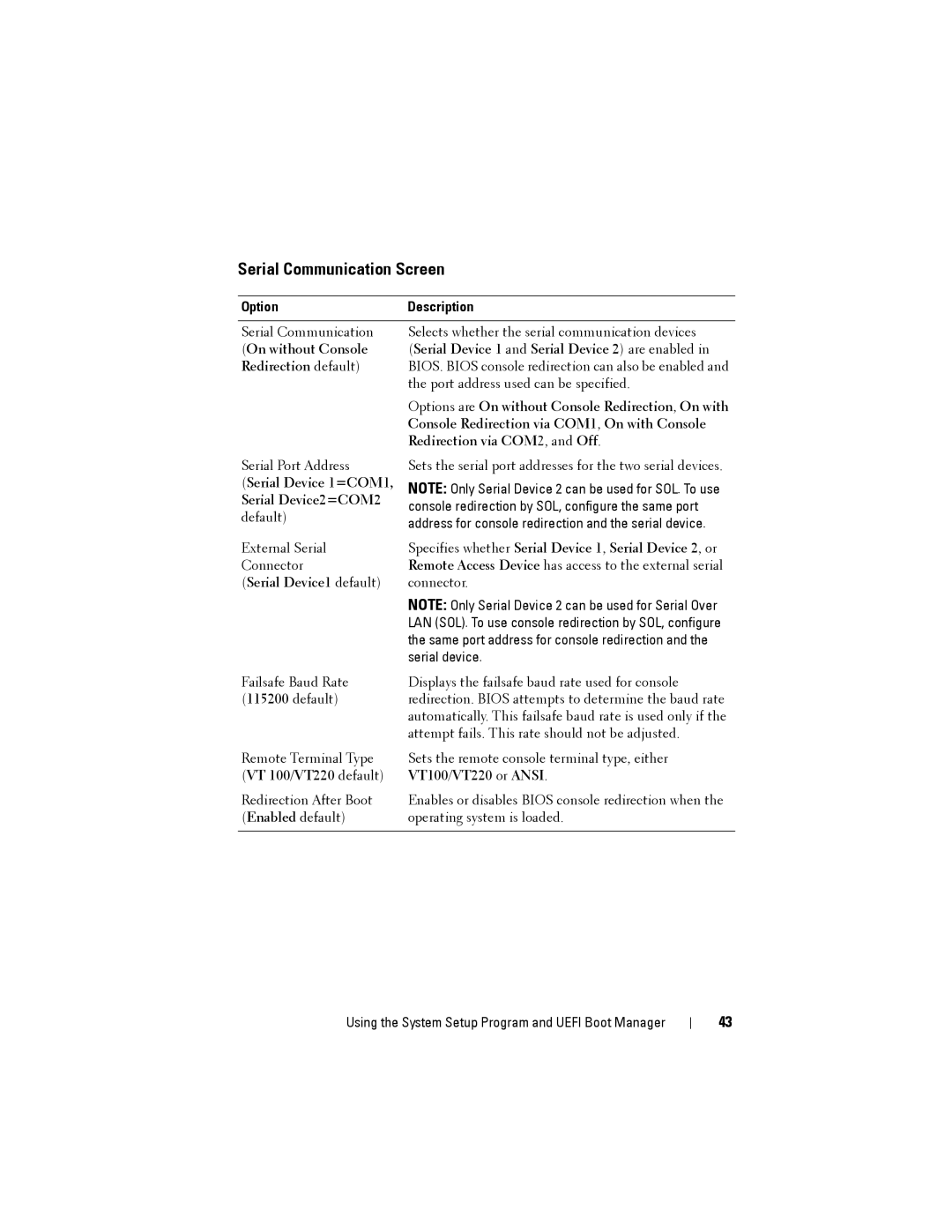Serial Communication Screen
Option | Description | |
|
| |
Serial Communication | Selects whether the serial communication devices | |
(On without Console | (Serial Device 1 and Serial Device 2) are enabled in | |
Redirection default) | BIOS. BIOS console redirection can also be enabled and | |
| the port address used can be specified. | |
| Options are On without Console Redirection, On with | |
| Console Redirection via COM1, On with Console | |
| Redirection via COM2, and Off. | |
Serial Port Address | Sets the serial port addresses for the two serial devices. | |
(Serial Device 1=COM1, | NOTE: Only Serial Device 2 can be used for SOL. To use | |
Serial Device2=COM2 | console redirection by SOL, configure the same port | |
default) | ||
address for console redirection and the serial device. | ||
| ||
External Serial | Specifies whether Serial Device 1, Serial Device 2, or | |
Connector | Remote Access Device has access to the external serial | |
(Serial Device1 default) | connector. | |
| NOTE: Only Serial Device 2 can be used for Serial Over | |
| LAN (SOL). To use console redirection by SOL, configure | |
| the same port address for console redirection and the | |
| serial device. | |
Failsafe Baud Rate | Displays the failsafe baud rate used for console | |
(115200 default) | redirection. BIOS attempts to determine the baud rate | |
| automatically. This failsafe baud rate is used only if the | |
| attempt fails. This rate should not be adjusted. | |
Remote Terminal Type | Sets the remote console terminal type, either | |
(VT 100/VT220 default) | VT100/VT220 or ANSI. | |
Redirection After Boot | Enables or disables BIOS console redirection when the | |
(Enabled default) | operating system is loaded. | |
|
|
Using the System Setup Program and UEFI Boot Manager
43
